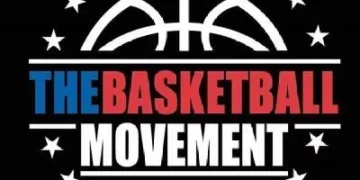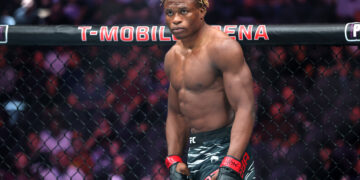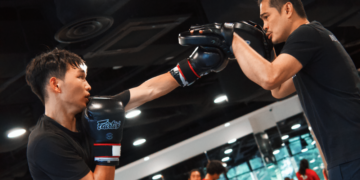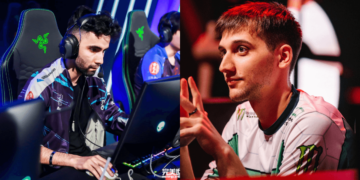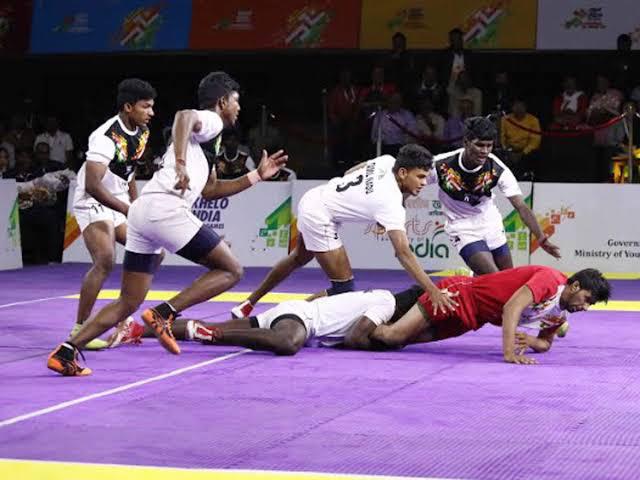Let’s be honest, everyone, aggression gets a bad rep. In day-to-day life, we’re told to stay calm, composed, and controlled. And that’s good advice for your job, at home with your family, maybe even for traffic. But once you step into the ring, the cage, or onto the mats?
Aggression becomes your ally. Don’t get us wrong, we’re not talking about blind rage, not swinging wildly. What we’re referring to is that sharp, deliberate kind of aggression that pushes the pace, breaks rhythm, and forces your opponent to react.
In competitions, the fighter who controls the pace usually controls the outcome. And more often than not, the one who asserts themselves early and consistently has the edge.
Let’s Define What “Aggression” Is In Martial Arts?
It’s not about being angry. It’s not about throwing haymakers just to look busy. True aggression in martial arts is about intent.
It means:
- Closing distance with purpose.
- Throwing with commitment.
- Pressuring without panicking.
- Fighting on the front foot (even from your back).
Aggression is the difference between reacting and dictating. And in a sport where seconds count, hesitation can cost everything.
Aggression Wins Points (And Moments)

In Muay Thai, boxing, BJJ, or MMA, aggression matters; judges favor fighters who initiate, advance, and chase the win over those who play it safe.
Whether it’s Muay Thai, boxing, BJJ, or MMA, judges notice forward movement. They often look out for who’s initiating the fights, who’s chasing the finish, and who’s trying to win versus just trying to survive?
In striking, a fighter constantly pressing forward, landing shots, or walking down an opponent, even if they eat a few shots, often appears in control. It’s not always fair, but it’s true.
In grappling, aggression means hunting for submissions, initiating scrambles, and actively pursuing the next position. A passive guard might be technically sound, but if it’s stalling, it looks like a loss.
While aggression doesn’t guarantee a victory, passivity almost guarantees defeat.
Psychological Warfare And Making Them Uncomfortable
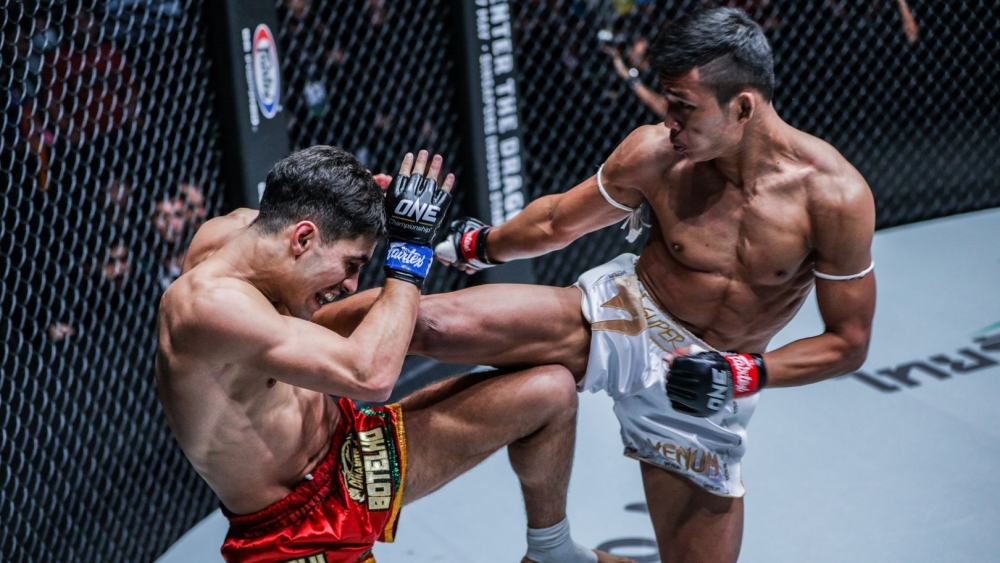
Aggression isn’t just about throwing first; it’s about taking control, forcing reactions, and sending a clear message: you’re here to dictate the fight, not wait for it.
Here’s something every experienced fighter knows: aggression isn’t just physical. When you bring pressure, when you’re first to strike, first to shoot, first to grip, you force your opponent to defend. You make them think. And once they’re thinking, they’re not flowing. They’re not free because they’re reacting to your game.
This is especially obvious in the first minute of a match. A fast, assertive start can break confidence before a clean strike even lands. It’s a message: “I’m here to take this. Not wait for it.”
And that message matters. Most fights aren’t won by dominance; they’re won by tiny shifts in control that build up over time. Aggression is how you start tipping that scale early.
Will there be some level of risk involved? Of course, there will be, but that’s the whole point. Controlled aggression walks the line between confidence and chaos. Think of it as ‘controlled chaos’. You might get hit while walking forward. You might lose position chasing a finish.
But you also might break your opponent mentally. You might overwhelm them. You might land clean and never let them recover.
Fighting is risk management. Aggression doesn’t mean throwing caution to the wind; it means owning the risk instead of avoiding it.
How To Train Aggression (Without Losing Your Head)
It’s not enough to “be more aggressive.” You’ve got to train it deliberately and intelligently.
- Start Sparring With A Goal: Every round, have a focus, initiate first, pressure the cage, and shoot within 30 seconds. Make it part of your rhythm.
- Drill With Tempo: When you’re hitting the pads or doing situational drills, train with urgency. Practice moving forward, throwing combos with intent, and flowing through positions like you’re in a match.
- Compete Often, Even In-House: The more you feel the adrenaline spike of competition, the more comfortable you’ll get with flipping that internal switch.
It’s a skill, just like timing or footwork. And the more you use it, the better you get at choosing when to turn it on.
Final Thoughts
Aggression isn’t being reckless. It’s pressure with purpose. Remember, every movement is intentional, like moving a chess piece.
It’s the spark that turns all your training into action when the lights are on and the crowd is watching. And when two evenly matched athletes face off, the more aggressive one almost always walks away with the win, or at least with no regrets.
So, whether you’re striking, grappling, or somewhere in between, don’t wait for the fight to come to you. Go out and take it.
You may also like:
The Science Of Footwork: Why Movement Matters In Every Martial Art
In martial arts, you’ll often come across a wide range of terms used during training. But when you hear the word sparring, what comes to mind? It means stepping into the training space with another…
Alright, let’s get this out of the way first: yes, Jake Paul is officially ranked by the WBC. And yes, depending on who you ask, that either means boxing is finally evolving, or that it’s…
If you are thinking about picking up a striking martial art in Singapore, you’ve probably heard of two popular options, Muay Thai and Boxing. Whether your goal is fitness, fun, or personal growth, understanding the…
Whether you are training at a local martial arts gym in Singapore training Boxing, Muay Thai, MMA or anywhere else, you will always hear one word repeated, footwork. Why is that? Well, you can have…
It usually starts as a joke. You’re in boxing class, working the pads, and the coach calls out, “Alright, switch stance!” You awkwardly shift your right foot forward. You feel like a baby deer. Nothing…
Tennis balls aren’t just for tennis players. They’re also a valuable tool for boxers looking to enhance their agility, coordination, and reflexes. Incorporating tennis ball drills into your boxing training regimen can significantly improve your…
Kids today face much more peer pressure than their parents did because of the internet and social media. Once upon a time, restricting the outside influences on your child was as simple as limiting which…
If you’re looking to improve your fitness and stay motivated, heading to a martial arts gym in Singapore or anywhere else might be just what you need. Over the past few years, more people have…
There’s a saying in grappling circles: “Whoever gets the underhook, gets the win.” It might sound dramatic, but spend enough time rolling, and you’ll start to realize it’s not far off. The underhook is one…
In 2009, at the IBJJF World Championship, a relatively unknown BJJ black belt named Bernardo Faria faced a physically superior opponent in the open weight division. As the match intensified, Faria slid underneath his opponent,…
Think martial arts is a young person’s game? Think again. Signing up for martial arts classes could be one of the best decisions you’ve ever made for your mental and physical health, whether you’re 40,…
Trying something new without knowing what to expect can feel intimidating. Whether it’s a new job, a change in routine, or something completely different like learning a martial art. Out of all the styles available,…




